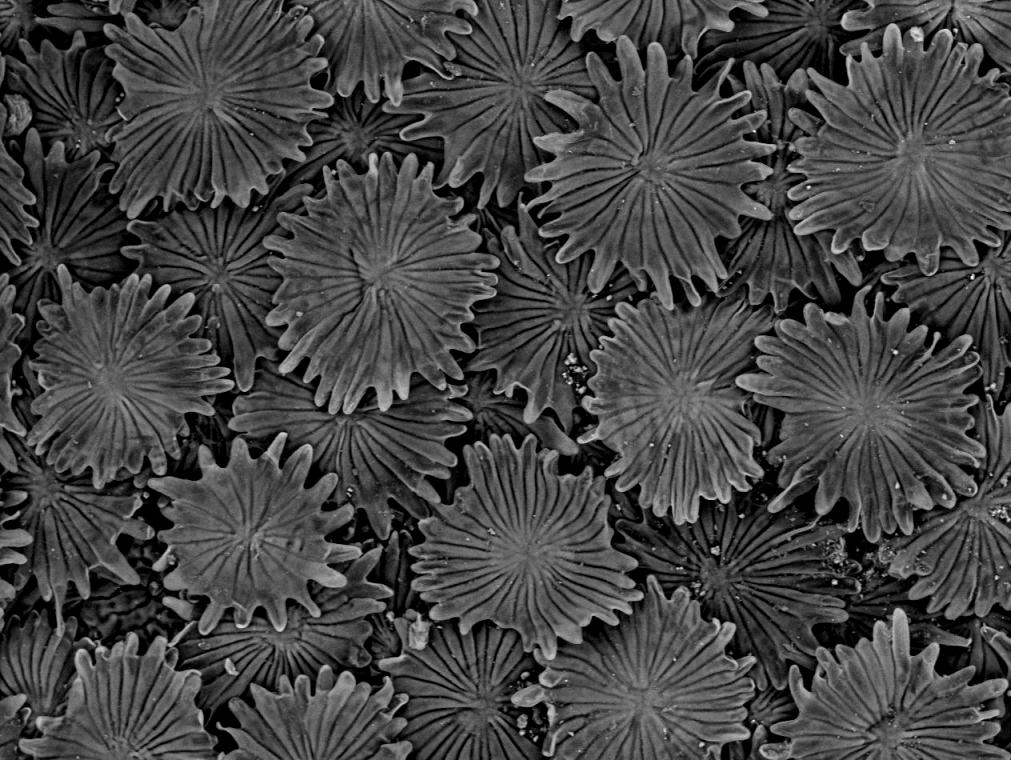
The surface of an ivy leaf
Plants like you’ve never seen them before
So often we overlook the intricacies of nature. It is not our fault, though. Life builds wonders too small for our naked eyes to see. Biological sciences professor Erwin Huebner, however, enables us to see flowers and leaves in new ways. As plants begin to emerge once again, we share some images Huebner took using an electron microscope in the University of Manitoba’s Biological Imaging Facility.
“As a biologist I have been privileged to be able to look at the microarchitecture of a variety of plants, fungi and animals and see a ‘world’ not visible to the naked eye by most who appreciate nature. The spectacular and wondrous structures that have evolved in nature have given us a rich biodiversity that surrounds us and allowed the myriad species to survive and flourish in many habitats. The overall intricacy and inherent beauty one sees in nature has inspired art and design for millennia.”– professor Erwin Huebner, writing for The Prairie Garden in 2013.
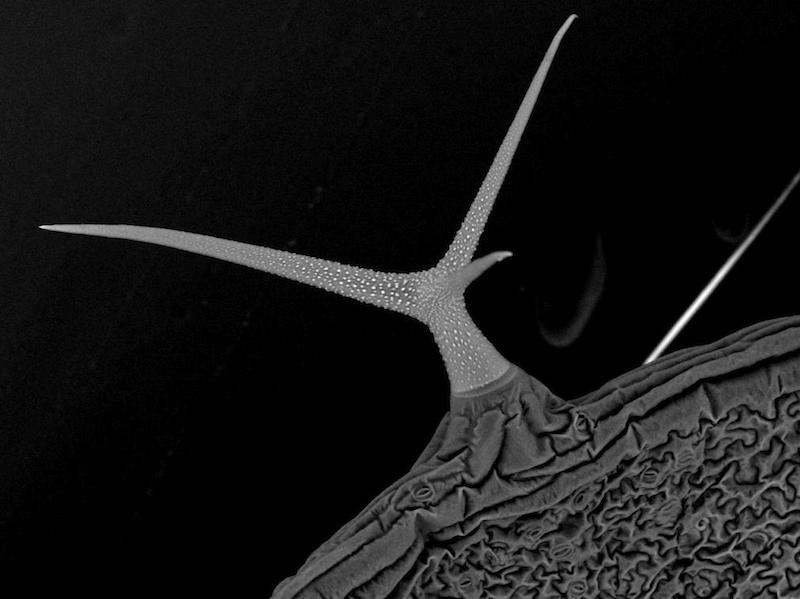
THIS IS THE ARAPIDOPSIS LEAF’S TRICHROME. A TRICHROME IS A HAIR ON A PLANT LEAF THAT OFTEN SERVES A DEFENSIVE PURPOSE, SOME CAN INJECT TOXINS (THINK OF STINGING NETTLE) BUT THE ARAPIDOPSIS TRICHROME USES A DIFFERENT TACTIC TO REPEL FEEDERS. BY ITS VERY STRUCTURE, THE TRICHROME OFFERS MECHANICAL PROTECTION, AND IT PRODUCE ANTI-FEEDING CHEMICALS TO DETER INSECTS THAT EITHER TRY TO EAT PART OF THE LEAF OR BRUSH UP AGAINST IT.
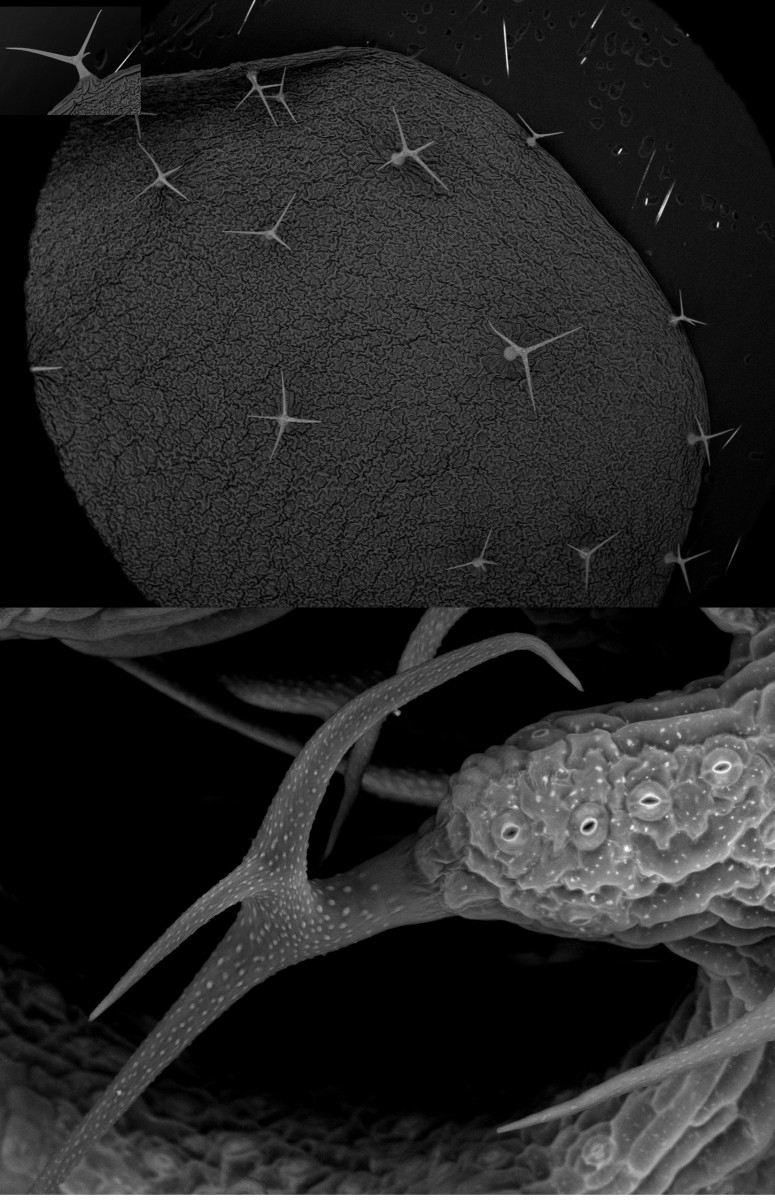
ON THE TOP, A “BIRDS EYE” VIEW OF THE LEAF’S TRICHOME DISTRIBUTION. BELOW, ANOTHER TYPE OF TRICHOME ON THE ARAPIDOPSIS SURFACE. THE HOLES — STOMA — ON THE RIGHT OF THE STRUCTURE ARE USED FOR GAS EXCHANGE.
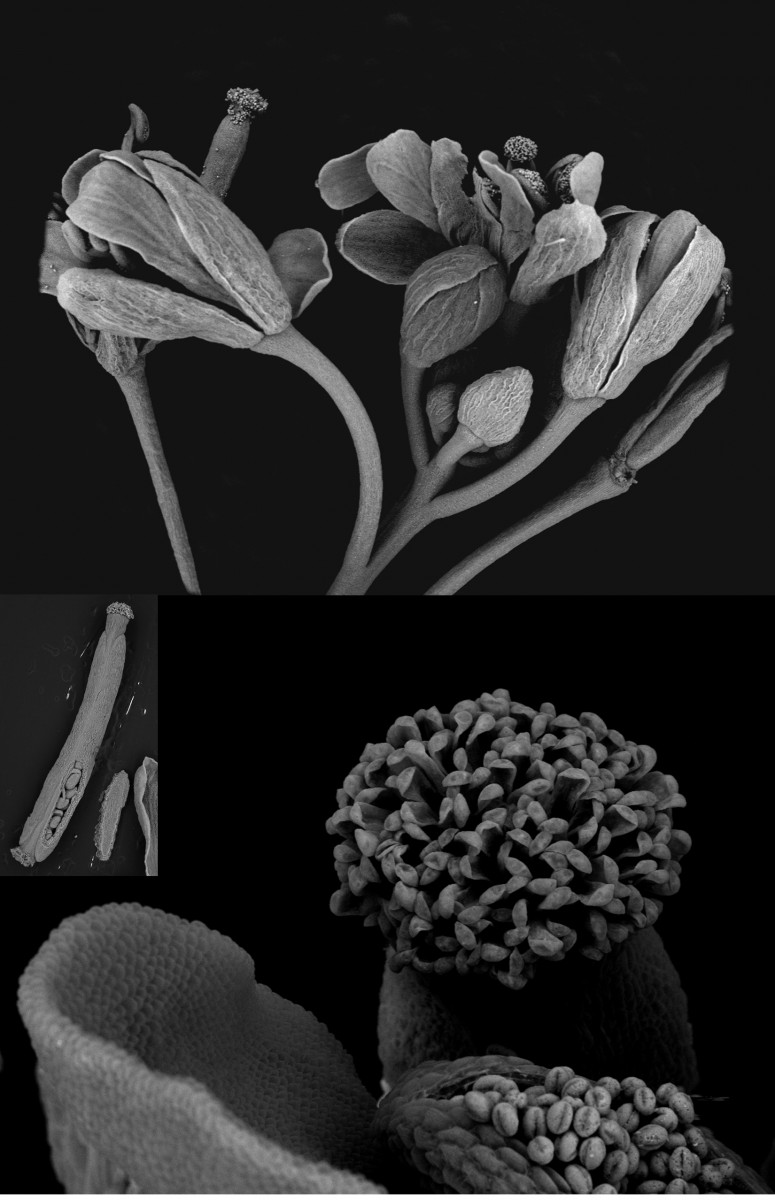
THE FLOWERS OF AN ARABIDOPSIS PLANT, ONE OF THE MOST STUDIED PLANTS IN SCIENCE. UPPER IMAGE SHOWS THE ENTIRE FLORAL ARRAY WITH MALE AND FEMALE PARTS AND PETALS AND SEPALS, WITH THE LOWER IMAGE SHOWING A HIGHER MAGNIFICATION OF THE FEMALE PISTEL WITH STIGMA AT THE TOP, A MALE ANTHER WITH POLLEN GRAINS AND A NEARBY PETAL
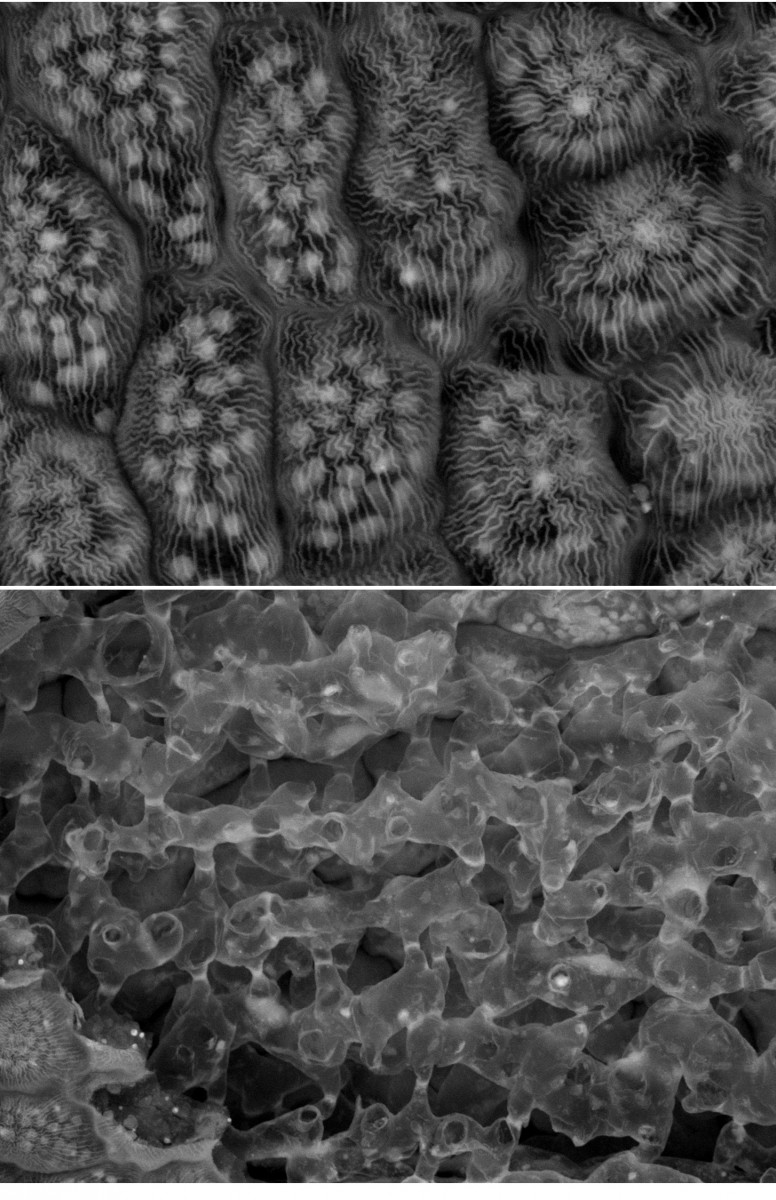
The upper image shows what a canola leaf looks like. THE LOWER IMAGE shows A CUT-AWAY SIDE IMAGE OF THE LEAF INTERIOR!
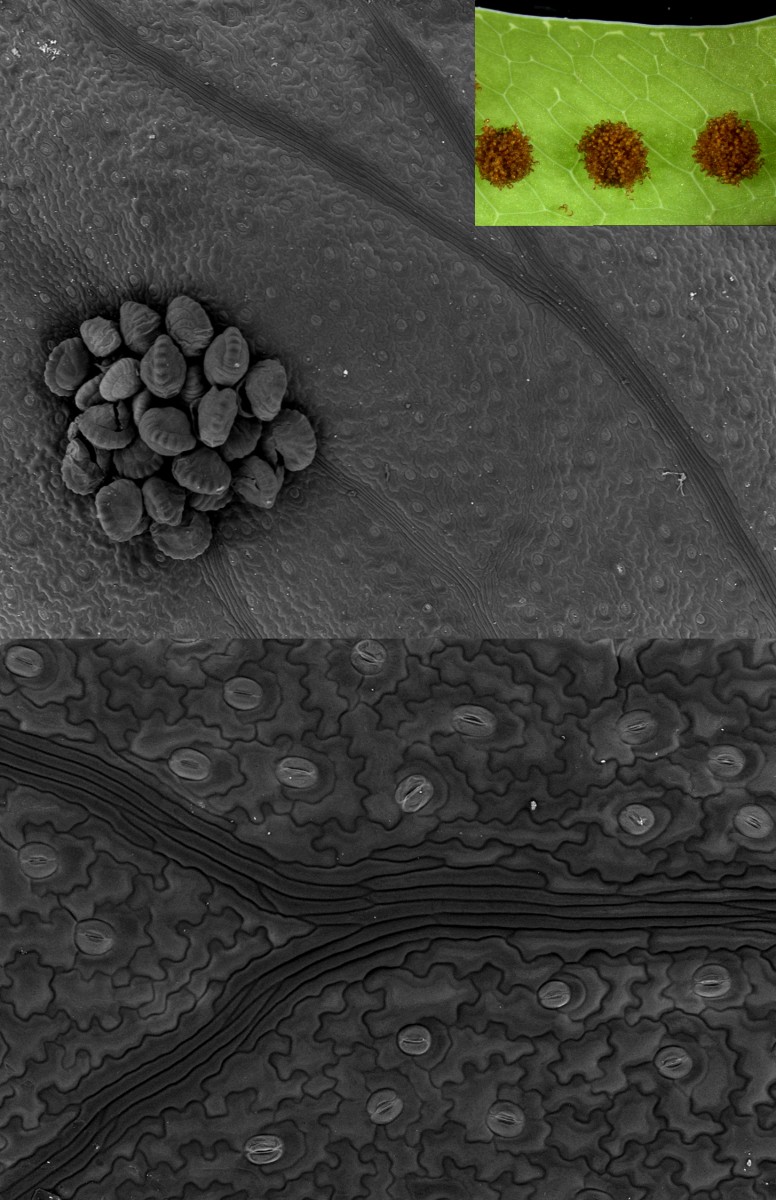
A COMPOSITE OF THE UNDERSIDE OF A FERN LEAF SHOWING THE SORI, WHICH ARE CLUSTERS OF SPORANGIA (the part that produces spores). The lower image shows THE JIGSAW-PUZZLE-LIKE SURFACE EPIDERMAL CELLS, and the special openings called stomata, which the plant uses to “breathe”. Running through the image is the branching linear vein.
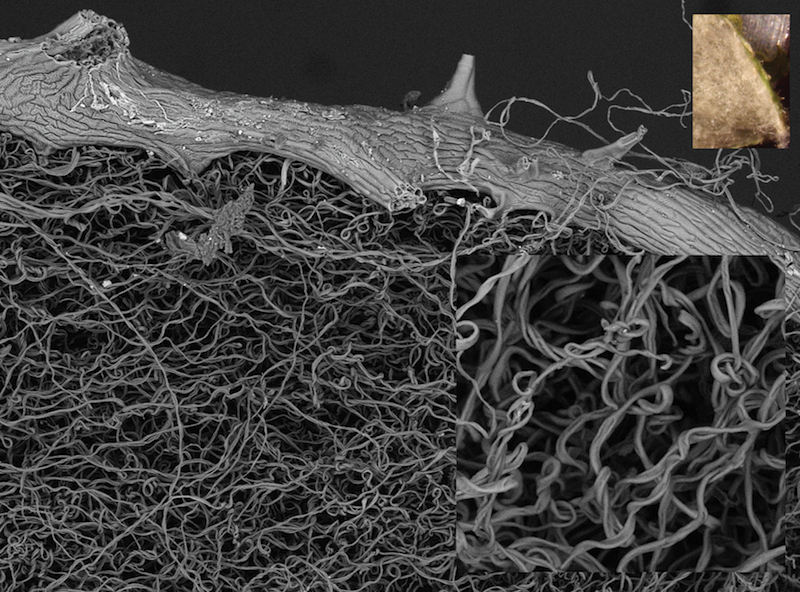
THIS COMPOSITE OF AN UNDERSIDE OF A THISTLE LEAF shows THE SMOOTH CELLS ON THE UPPER SURFACE AND, ON THE LOWER SURFACE, the TANGLED MATT OF FIBReS THAT GIVE THE LEAF THE FUZZY SURFACE WHEN SEEN WITH THE NAKED EYE.







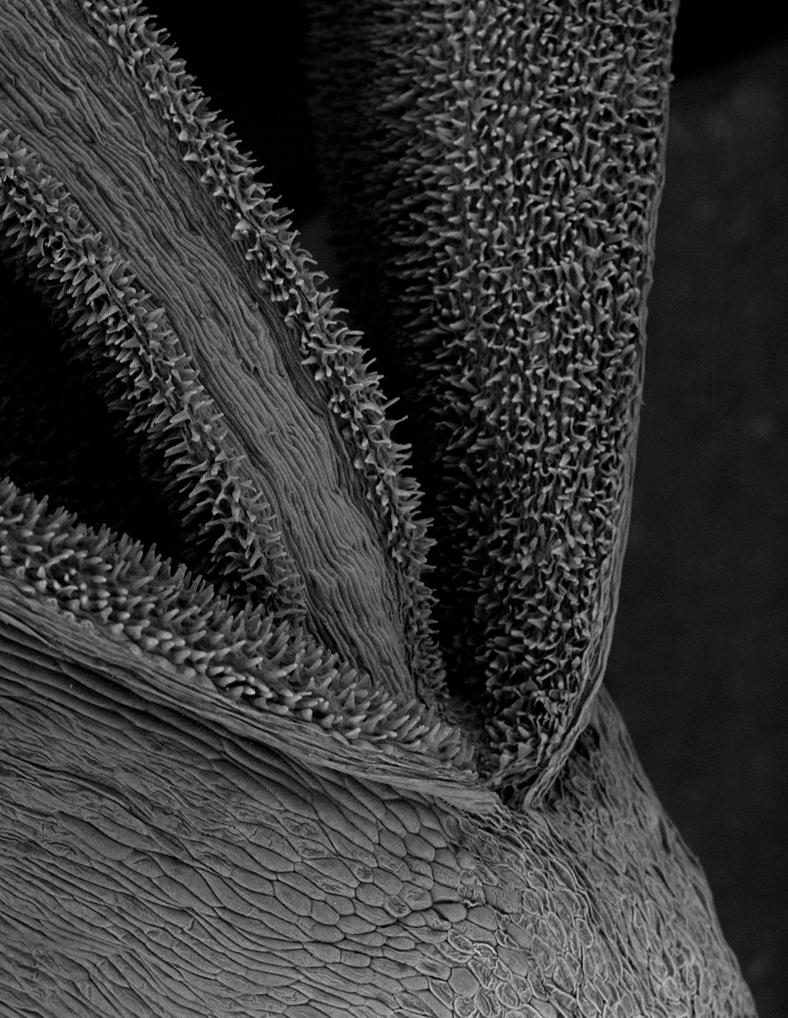
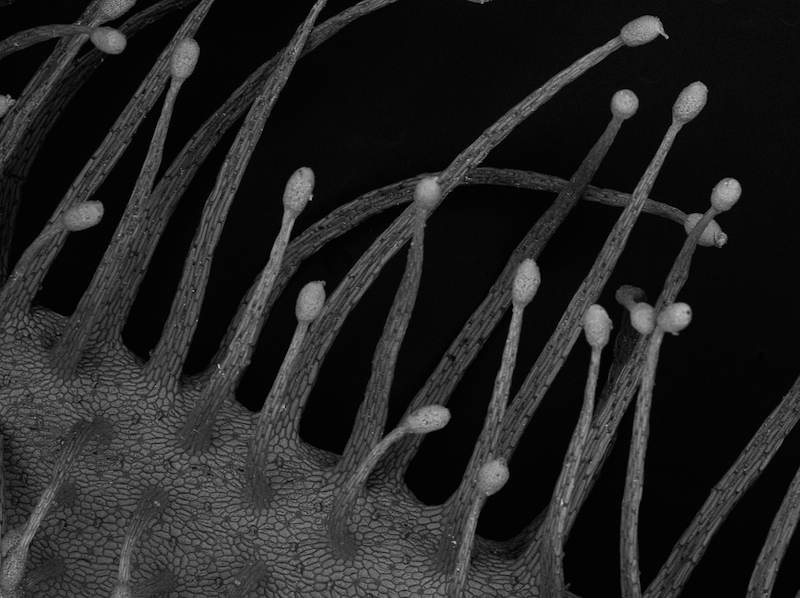
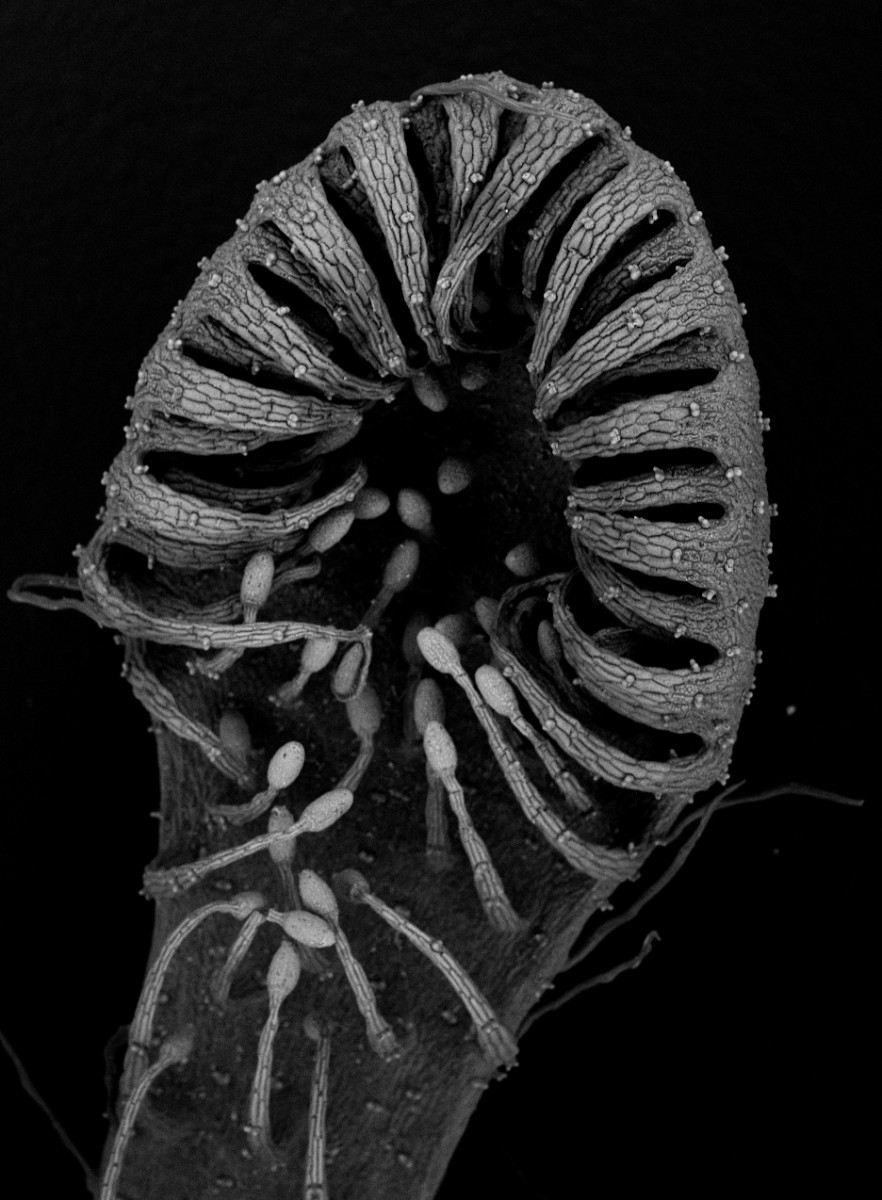
Thank you for publishing these fascinating micrographs from Dr Huebner!